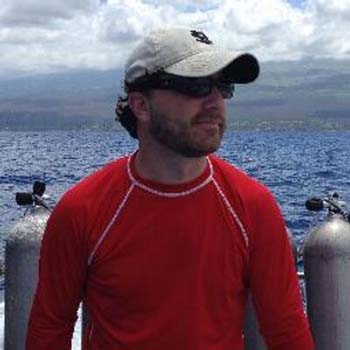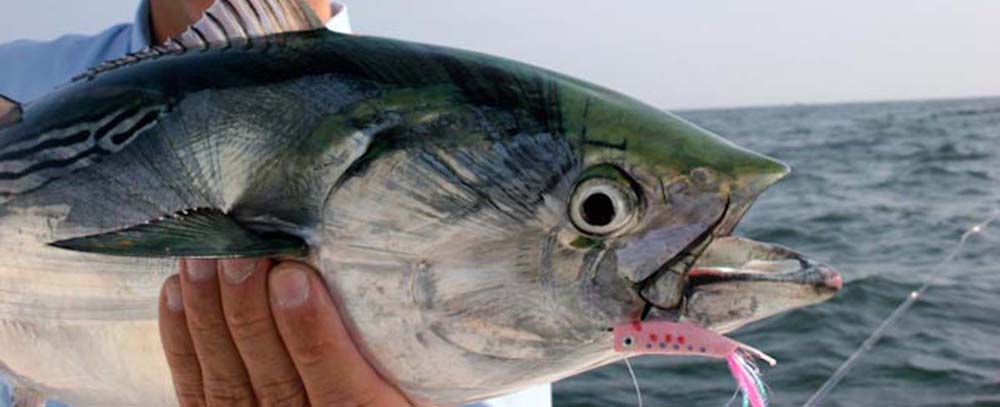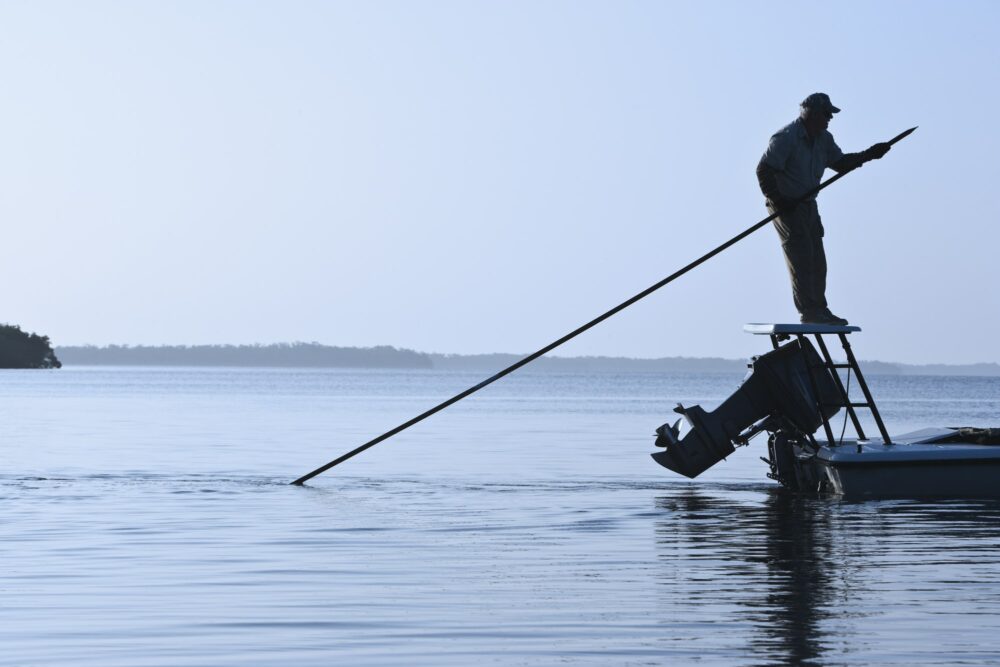
Capt. Andrew Derr [212.495.9062] with a season opener near Montauk, New York. The season is now in full swing: “The fish are jumpin’ and your mama is good lookin.”
Answering Your Questions About Estimating Recreational Catch†

NOAA – DAVE BARD.
Dave Bard / NOAA Marine Recreational Information Program / September 16, 2021
Saltwater anglers, for-hire captains, and other members of the recreational fishing community often ask how we collect recreational fishing data, and how we use that data to estimate total recreational catch. Our Ask MRIP web series answers your questions about the science and statistics that support sustainable fishing. In this post, we answer seven questions about producing estimates, measuring statistical precision, and more.
Why do we “estimate” recreational catch?
NOAA Fisheries’ Marine Recreational Information Program is a state-regional-federal partnership that produces annual estimates of marine recreational landings, releases, and fishing trips. We produce “estimates” because the exact number of fish recreational anglers catch, keep, and release is nearly impossible to determine. The size of the recreational fishing community and the number of fishing access sites are too large to collect and verify information from every single angler about every trip they take. However, our sample surveys are an effective method of collecting information about a population when it’s not possible or practical to conduct a census.
How does sampling work?
Our probability-based sample surveys gather data from a randomly selected sample of the recreational fishing community. A process known as statistical weighting is applied to each fishing trip we intercept and each effort questionnaire we receive. This ensures these sampled units are representative of the full recreational fishing community. In this way, we are able to draw conclusions about an entire population without having to collect information from each member of that population.
Weighting is a multi-step process. Once a catch record or returned effort questionnaire has been weighted, it represents itself and the broader population of anglers we weren’t able to sample. For example:
- One of the steps in weighting catch records collected through the Access Point Angler Intercept Survey ensures our samples are representative of all of the fishing trips that occurred at a site during a field interviewer’s assignment, rather than only those trips an interviewer was able to intercept
- One of the steps in weighting the data collected through the Fishing Effort Survey ensures our samples are representative of all the households in the states we conduct our survey, rather than only those households that responded

Capt. Andrew Derr‘s [212.495.9062] regular clients going for the gold – albies.
How does NOAA Fisheries produce its estimates of recreational catch?
At its core, estimating total recreational catch involves expanding catch rate, or the estimated number of fish caught per angler trip, by effort, or the estimated number of fishing trips taken.
Catch rate is determined using data collected through the Access Point Angler Intercept Survey. Effort is determined using data collected through the Fishing Effort Survey, For-Hire Survey, and regional for-hire trip reporting programs. These estimates are available by geographic region, fishing mode, area fished, type of catch, and species caught.
Learn more about the Marine Recreational Information Program’s estimation methods . . .
Why does NOAA Fisheries publish its point estimates with measures of precision?
Measures of precision help scientists and managers evaluate the relative strength of an estimate. Publishing point estimates with measures of precision is a best statistical practice and a requirement under our Recreational Fishing Survey and Data Standards.
We use an estimate’s percent standard error as an indicator of its precision. The lower the percent standard error, the more precise an estimate. Because precision often improves as sample sizes increase, our estimates are best viewed at the annual and regional levels rather than the 2-month sampling wave or state-specific scales.
How does NOAA Fisheries ensure its estimates are high-quality?
NOAA Fisheries is committed to implementing carefully designed surveys, collecting high-quality data, and producing sound fisheries statistics. Our data collection programs adhere to a suite of survey and data standards, and meet science and management needs for most federally managed fisheries. The National Academies of Sciences, Engineering, and Medicine recently published a report, “Data and Management Strategies for Recreational Fisheries with Annual Catch Limits.” It confirmed, “Within their intended scope and design constraints, MRIP data are critically important for fisheries management.”
Because precision often improves as sample sizes increase, we are working to expand our sample where more precise estimates are needed. In 2020, we began:
- Dedicating Modern Fish Act investment funds to states along the Atlantic, Gulf, and Pacific coasts to expand angler sampling and improve the precision of catch estimates
- Investigating whether the precision of estimates for rare-event species could be improved by measuring average catch per trip as calculated over multiple years
- We have also helped our state partners develop data collection programs to provide more precise and more timely catch estimates for red snapper and other species in the Gulf of Mexico.

False albacore by award-winning watercolorist Thom Glace – here’s a link to his awesome gallery.
Why is this important to anglers?
The recreational fishing community is our primary source of recreational fishing data. These data help scientists assess the size and health of fish populations. In turn, these scientific reports help managers set catch limits and fishing regulations. When anglers like you participate in a field interview or fill out a fishing effort questionnaire, you’re making a vital contribution to science, management, and the sustainability of a great American pastime.
About MRIP
The Marine Recreational Information Program (MRIP) is the state-regional-federal partnership responsible for developing, improving, and implementing surveys that measure how many trips saltwater anglers take and how many fish they catch.
Do you have a question about recreational fishing data collection or estimation? Email Dave Bard at david.bard@noaa.gov or visit countmyfish@noaa.gov







